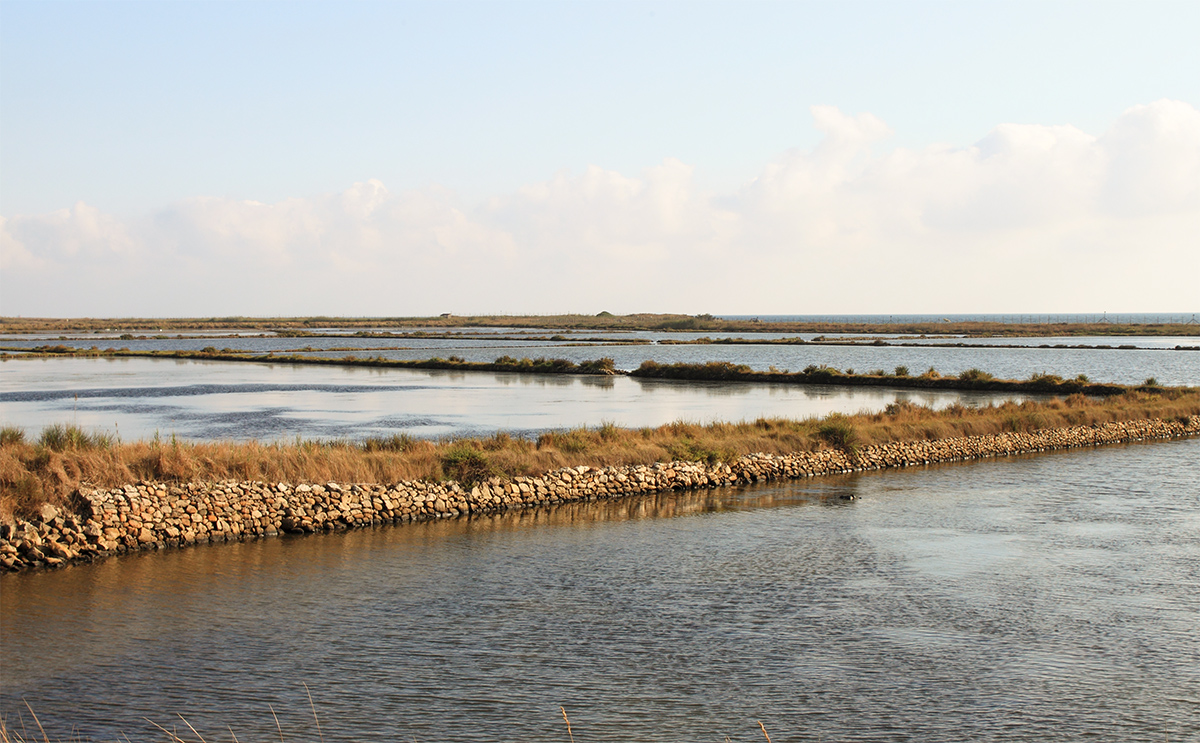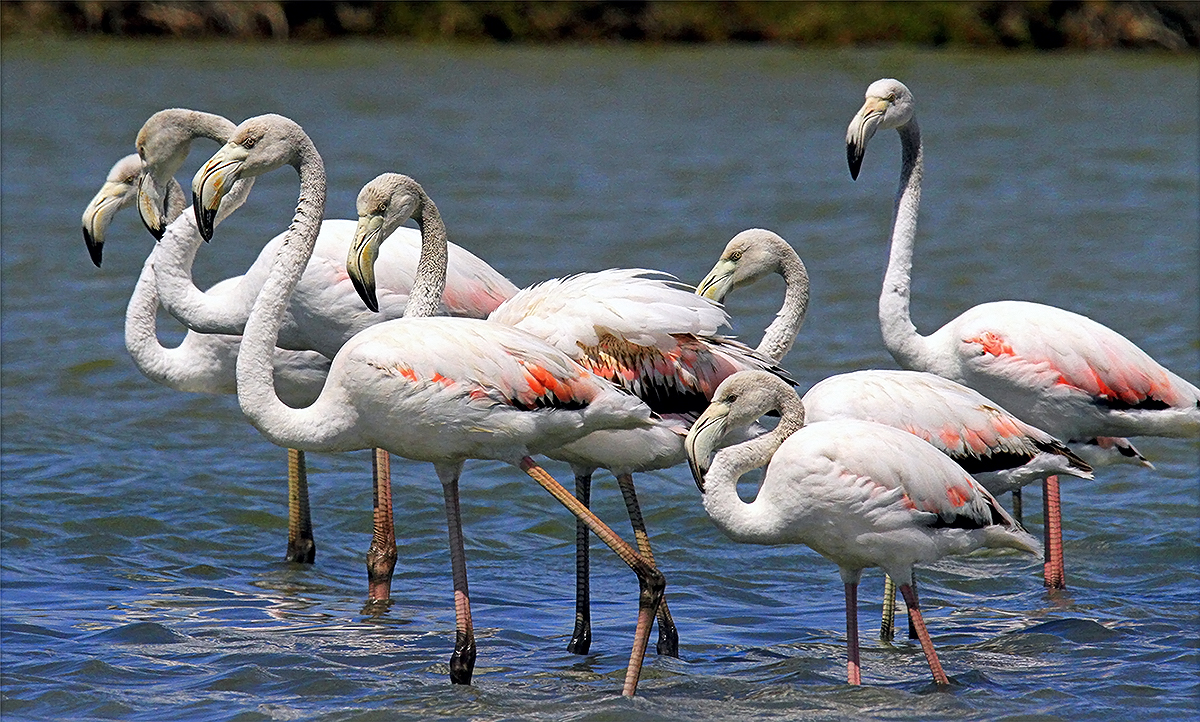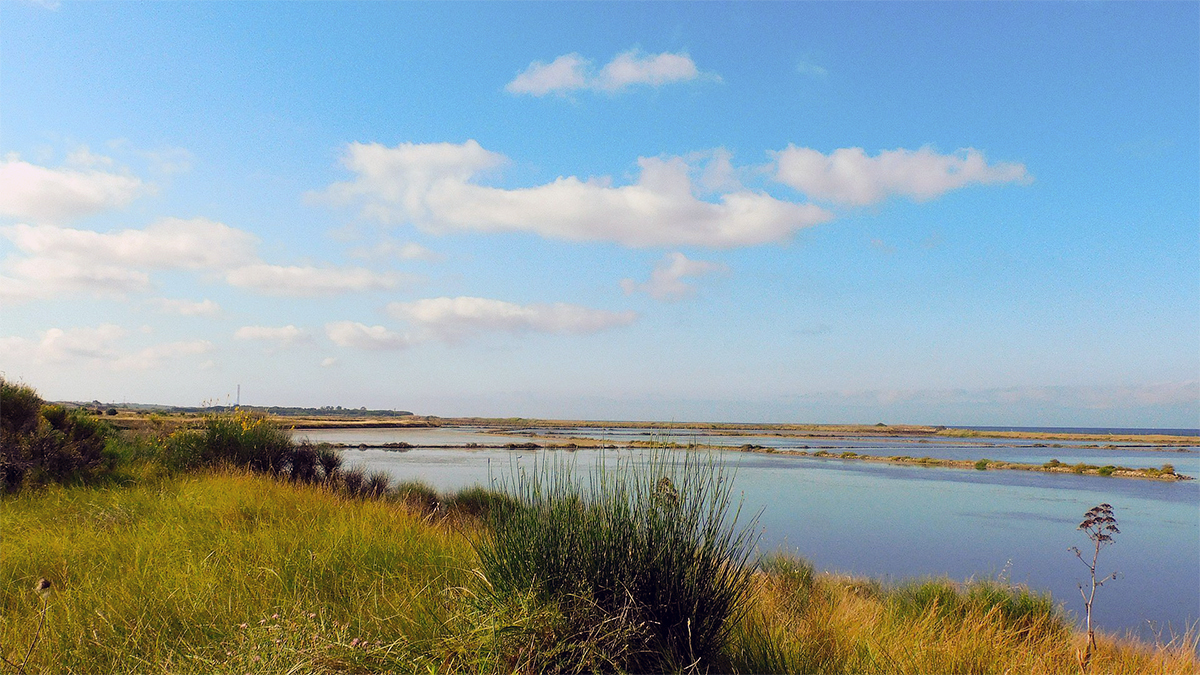Visiting the Nature Reserve Saline di Tarquinia
History, curiosities and useful tips to plan at best your visit Tarquinia saltpan and the beach.Located close to the ancient port of Gravisca (today Porto Clementino), the Nature Reserve Saline of Tarquinia is a natural site of extreme importance, in addition to being the only saltpan in the Lazio region and one of the few remaining along the entire coast of Italy.
Extended for about 150 hectares, of which 100 of coastal lagoon, the reserve welcomes and protects several species of migratory and nonmigratory birds, among which in the foreground are some beautiful exemplars of pink flamingos, regular "guests" of the reserve and main attraction for photographers and bird watchers.
But let's find out more about the Saline, starting from their history.
SALINE DI TARQUINIA: A BIT OF HISTORY
The Saline di Tarquinia have very old origins and there are signs that proof its existence since Etruscan and Roman times. During the Medieval age, on the other hand, its activity fell and it was resumed in 1802 incentivized by Pope Pius VI.
The Church, in fact, was looking for a suitable place to produce salt, to replace the Salt Pans of Ostia, which had by then become unusable due to continuous floods.
About 6 miles from Corneto (ancient name of Tarquinia) began the building of the new saltpans in 1802. Initially, the prisoners in the Clementino Por jail worked on the construction. Then toward the end of the 19th century a small village was built, in an eclectic style, to accommodate the plants for the production and storage of salt and offer hospitality to the workers.
In 1980, due to the importance of the area for migratory and nonmigratory birds, was established the Nature Reserve of Animal Population and entrusted to the State Forestry Corps that still today manages the entity, while since 1997, activities of salt extraction are inactive.

Nature Reserve Saline di Tarquinia
VISITING THE TARQUINIA SALTPANS BETWEEN SEA AND NATURE
Visiting the Salt Pans of Tarquinia is a fun and at the same time educational experience, suitable for both adults and children.
In fact, the site welcomes all year long a huge number of species of migratory and nonmigratory birds including pink flamingoes, little egrets, gray herons, black-winged stilts, Mediterranean gulls, white Herons, ospreys, mallard, great cormorant, quails, pheasant and many others.
In addition, you can also come across other nice specimens of foxes, porcupines, nutrias, hedgehogs, squirrels, and Hermann's tortoises.

Saltpans of Tarquinia - Some splendid specimens of pink flamingoes (Picture by Massimo Biondi)
It goes without saying that the reserve is an ideal place for photographers, photography enthusiasts and birdwacthers. If you have the right equipment and technique and a lot of patience, you can take home some excellent shoots!
The best periods are spring and autumm, when there's less tourism and animals are more bound to let you get closer. Also, it is advisable to wear camouflage clothes, o at least not to wear too gaudy, to avoid scaring the birds and make them fly away.

Nature Reserve Saline di Tarquinia - Photo by Leone Di Marcantonio, CC BY-SA 4.0
Tarquinia Saline: guided tours
The Saline di Tarquinia have been closed to the public since 2016.
The guided tours is only possible booking by calling the number +39 0766 864605 or writing an e-mail to pf.salineditarquinia@forestale.carabinieri.it
Exceptionally the Saline di Tarquinia are open only on some dedicated days such as the "Festa della Riserva" or special WWF events. To stay updated on the extraordinary openings, visit the Carabinieri website or the Facebook page.
To preserve the tranquility of the fauna during the visit the access is allowed only in certain areas of the protected area. If you are also looking to relax a little, close to the natural reserve you'll also find a nice free beach long about 4 km.
ITINERARIES AND POINTS OF INTEREST
Within the Reserve you can follow a recommended paths easily walkable on foot in an average time of 45 minutes:
PATH OF THE SMALL FRESHWATER LAKE: on the inner side of the Reserve, this route with the shape of an 8 goes along a small temporary freshwater basin and a bigger freshwater lake built thanks to a LIFE project on the tanks for salt precipitation. The path allows you to admire the typical riparian vegetation of the area, the former tanks and facilities for the production of salt divested in 1997 and the numerous birds present especially during winter, in particular, the pink flamingos housed in variable number over the entire year.
Among the main points of interest that can be visited within the reserve ares, we mention the Visitors center, where you can find information, dove potete trovare informazioni, leaflets and various materials about the Reserve, as well as a local guide of specialized staff; the Pools of the former saltpans can be visited only on request and accompanied by a member of the staff and the suggestive Burg of the former Saltpans, built from buildings of eclectic style once used to host the workers and the offices to elaborate the salt.
CURIOSITIES: THE SALTPANS AND PINOCCHIO
Perhaps not many people know it, but the famous movie "The Adventures of Pinocchio" directed by Luigi Comencini in 1972, based on the novel by Carlo Collodi, was shot almost exclusively within the territory of the Tuscia.
Among the many locations used, a remarkable place is precisely the Salt Pans of Tarquinia, and in particular the old village which was used as the set for many of the most significant scenes.
Among these, some of you may remember the scene in which Pinocchio goes after Candlewick who had stolen the pancakes to a street vendor, or when Candlewick escapes from school by climbing a wall, or even when Pinocchio found along the road the fairy which takes him back home.
Well, all this scenes are staged between the old village and the road that runs along the natural reserve of Salt Pans in Tarquinia.

A scene from The Adventures of Pinocchio set in the Saltpans of Tarquinia

A scene from The Adventures of Pinocchio set in the Village of the Saltpans
Useful information
- HOW TO GET THERE
- To get to the Nature Reserve Saline di Tarquinia we recommed to go on a private car, since it is quite far from the Train Station of Tarquinia. From Largo della Pace, take Strada Statale 1 and continue along Via Aurelia Nord at the town of La Scaglia. Take Via Ugo Fontanatetta towards Bagni di Sant'Agostino and then enter the Strada Provinciale Litoranea. Once there, you only need to follow directions and in less than 20 minutes you will get to your destination.Alternatively, also from Largo della Pace, you can take the road from Civitavecchia to Viterbo until arriving to Tarquinia city and from there, follow directions for Lido di Tarquinia and then for Saline.Alternatively close to Largo della Pace and Fort Michelangelo you can also take the Eusepi Bus (except on Sundays), stopping at Barriera S.Giusto, close to the Etruscan Museum. From there you can take other buses to reach other tourist destinations in Tarquinia ( for example Nature Reserve Saline). Tickets costs €2 each way. For information about times please refer to the official site.
- TIMETABLES
From 9 am to sunset.
To visit the Nature Reserve of the Saltpans you need to call +39 0766 864605 or write an e-mail to pf.salineditarquinia@forestale.carabinieri.it
- PRICES
Free



 PORT MOBILITY CIVITAVECCHIA
PORT MOBILITY CIVITAVECCHIA












